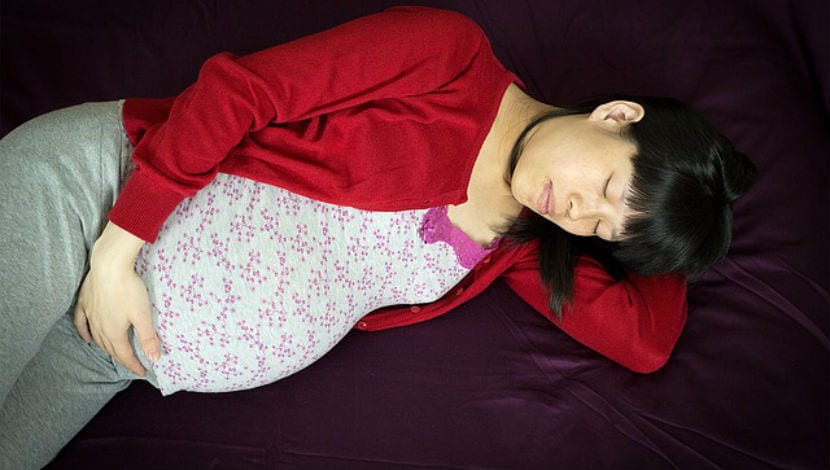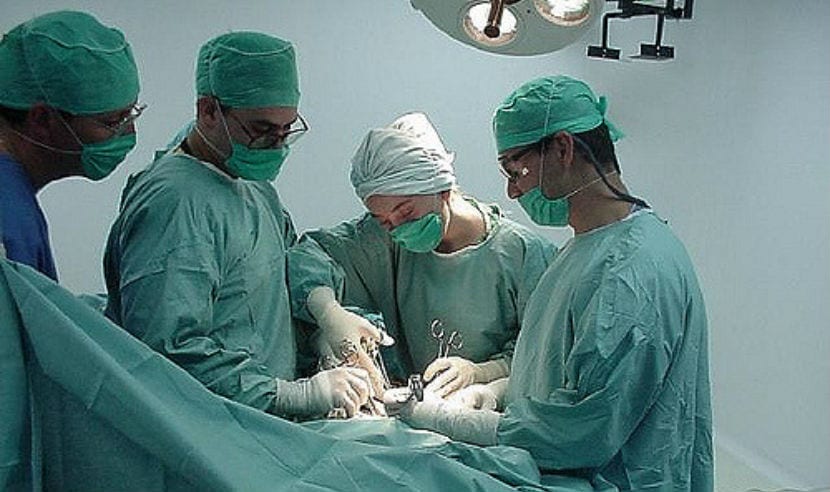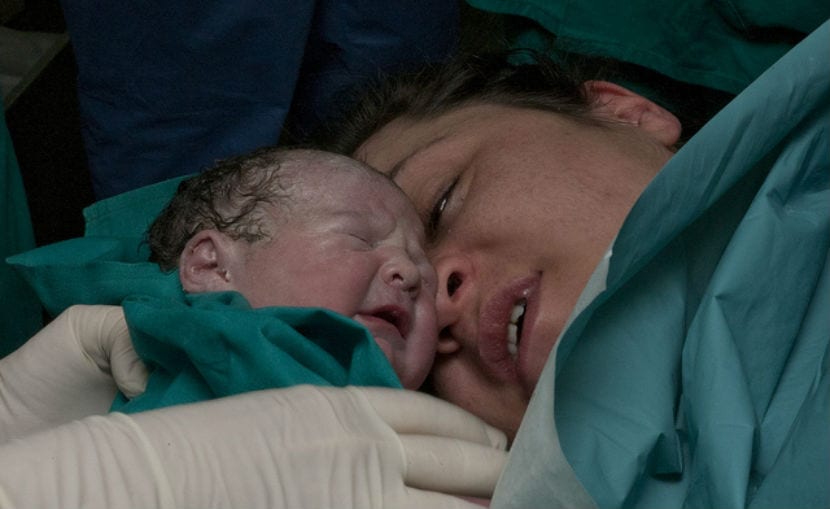
On many occasions in the midwife or obstetrician's office, future mothers ask us about the advantages of a delivery over a cesarean section. We always say the same: a delivery is better, Caesarean section should only be used when it is essential.
However, there is a belief that both mother and baby "suffer" during delivery, while in caesarean section everything is scheduled and is better for both, less stressful and that neither of them suffers.
Childbirth
It is common to think that, in addition, vaginal delivery is not possible after a cesarean section, but it is not.
During pregnancy, the mother's body undergoes many changes, all of them aimed both at being able to hold a baby in the womb and allow it to form and grow correctly, as well as the birth canal to prepare itself to allow the baby to come out.
Childbirth is a physiological event for the woman's bodyTherefore, the recovery after a vaginal delivery is much faster than after a cesarean section.
When the vaginal delivery ends, the necessary mechanisms are put into place so that the uterus contracts and the bleeding is as little as possible.
Contractions, dilation, and the baby's passage through that birth canal trigger the mechanisms necessary for hormonal change to occur and the hormones of pregnancy give rise to those of lactation, so that the "rise in milk" occurs earlier, for example ...
If we think about the baby, the passage through the birth canal is the most advantageous situation as well. During the dilation the baby prepares to cross the birth canal and that step It makes the baby adapt much better to the change that comes from being born.
For all this, it is always tried that mothers have vaginal deliveries, leaving caesarean section as an emergency intervention or for cases in which vaginal delivery is impossible.
Also, having a cesarean in the first delivery conditions the way we face the following and it can limit our chances of having more or fewer children.

What is a cesarean section?
A cesarean section is a surgical procedure. It is not, therefore, a physiological situation.
You need anesthesia, an operating room and a team of professionals as if any other surgical intervention involved.
Usually it is necessary spend a few hours later in a recovery room, a room where there is a stricter surveillance of the mother, in which generally, the babies cannot be, So those first few hours of skin-to-skin contact fundamental for the baby, he has to pass them away from his mother.
In a caesarean section There are increased risk of bleeding or infection and complications typical of any surgical intervention. And of course, the length of stay in the hospital and the recovery time after a cesarean section it is much more than in childbirth.
Having a cesarean section involves the uterus opening to allow the baby to come out through the incision in its mother's abdomen, leaving a scar. That scar is a zone of weakness of the wall of the uterus.
Pregnancy after cesarean section
In general, all specialists will recommend you wait a reasonable time after cesarean section until you get pregnant again. Most professionals speak of at least one year.
Because? So that the healing of the wound, both of the abdominal wall and of the uterus are completed as best as possible. The healing of the uterus wound is what more time needs to be consolidated again.
If we get pregnant too soon, the healing process may not be complete. So that when the uterus is distended again the cesarean scar can break.
Once that reasonable time has passed, it is important to consult with the specialist, who will confirm that we can look for a new pregnancy.
It is common that as the uterus grows we can have certain discomfort in the area of the scar. As soon as the baby begins to gain weight, they can increase. Consult with the obstetrician about the issue, when you do the ultrasounds they will be able to see the scar and assess its condition.
They should not be too strong a nuisance. If you notice intense pain, type "stab" in the lower belly area along with general discomfort, which is increasing, it is important go to the emergency department of the chosen maternity, so that they value the possibility that the scar has been broken.

Vaginal delivery after cesarean section (VBAC)
The fact that the first delivery had to end in cesarean section it does not mean that the next delivery will have to follow the same route. Although it does determine the way of facing the next delivery quite a bit.
All scientific societies advise attempting vaginal delivery in the next pregnancy. Vaginal delivery carries less risk of having a hysterectomy, fever, infections, complications, or thromboembolism.
Most of the authors of the different studies in this regard conclude that the attempted vaginal delivery after cesarean section it is safe and should be recommended In most cases.
What will my VBAC look like?
The uterus has a scar on its wall, that is, that wall is not intact, there is a zone of weakness. That is why you have to take good care of him during childbirth, so that the risk of breakage is minimal.
This assumes that delivery must be the most natural and with the minimum possible interventions by healthcare professionals. From avoiding inductions to avoiding administering oxytocin drips during labor or performing any technique or maneuver that increases the intensity or frequency of contractions.
It is also very important to monitor both such as contractions, the baby's heart rate and the appearance of any warning signs that can tell us that the scar from the previous cesarean section is breaking.

How many caesarean sections are safe?
The answer is simple; the least possible. En this link I leave you a comparison between childbirth or cesarean section.
Although there are some criticisms in this regard, according to the Spanish Society of Gynecology and Obstetrics (SEGO) it is not recommended to perform more than three cesarean sections. After the first cesarean section, it is recommended to attempt a vaginal delivery, but if you have already had two cesarean sections, the recommendation is to perform one third cesarean section and no more pregnancies.
However, there are some critical voices with this measure. Some studies assure that the risk of uterine rupture in case of two or more caesarean sections is not significantly higher than in cases of a single caesarean section, but performing systematic cesarean sections does pose serious risks for both the mother and the baby.
Who decides whether or not I will have a cesarean section?
In this case the decision must be consensual.
At the end of the pregnancy, if the conditions are right, Your obstetrician will explain the advantages and disadvantages of both possibilities.
If you decide to possibly attempt vaginal delivery, you will be asked to sign an informed consent document and if you decide not to try, they will schedule the date for you to perform the cesarean section.